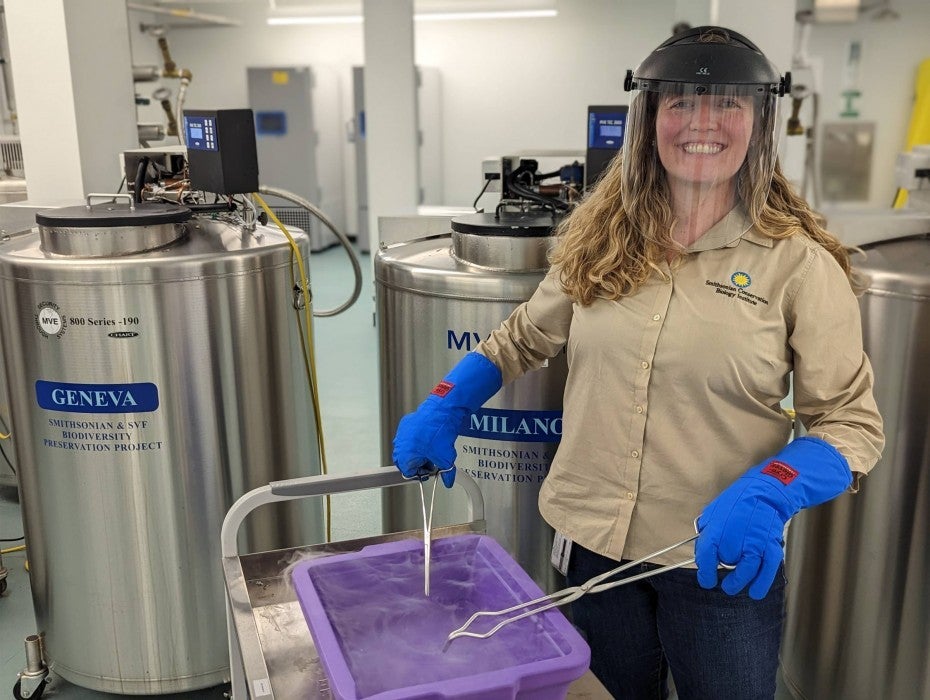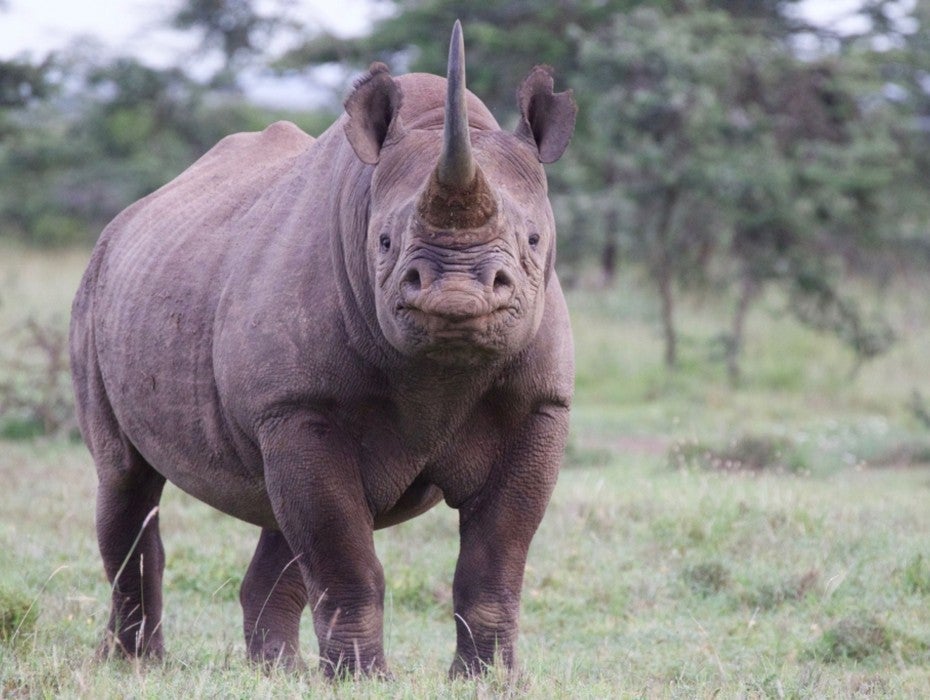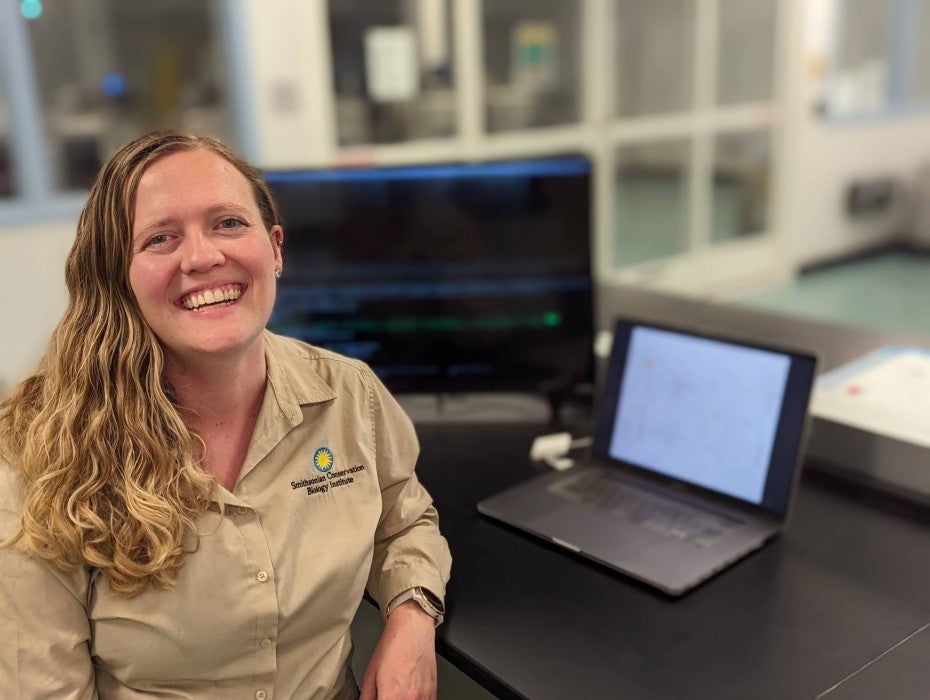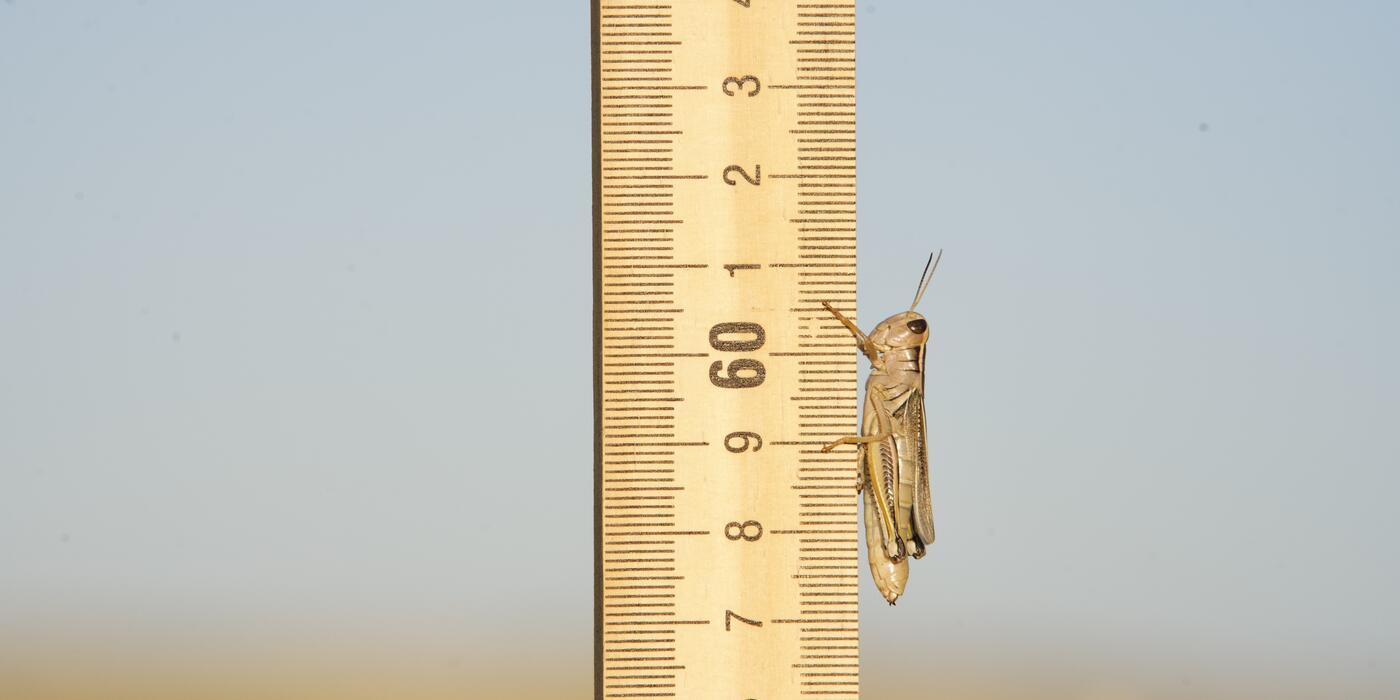Focus on the Future: Molly Corder
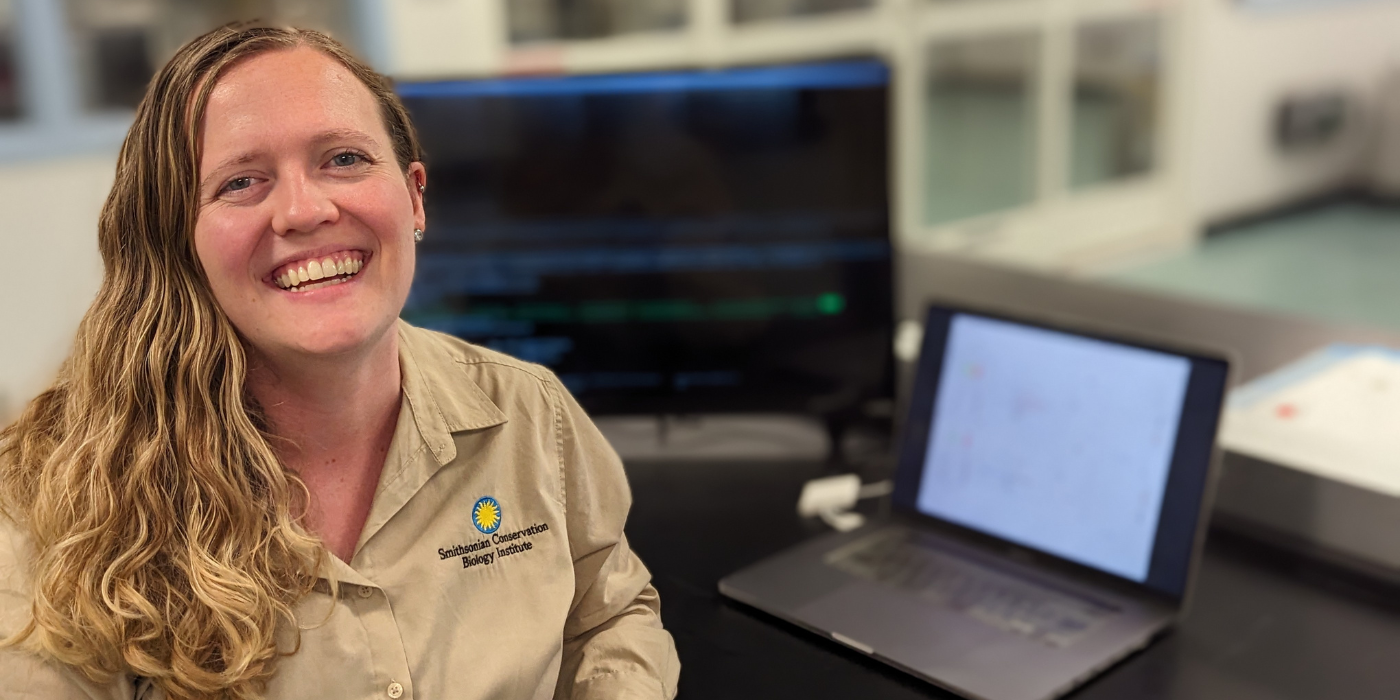
Focus on the Future is a series that seeks to highlight the early career scientists who conduct research at the Smithsonian's National Zoo and Conservation Biology Institute. Learn about our undergraduate, graduate and post-doctoral fellows and the conservation research they are supporting through first-hand accounts and stories.
Endangered species are why I get out of bed in the morning.
I am originally from Pittsburgh, Pennsylvania. I was born and raised there. It’s a blue-collar industrial town. Fortunately for me, Pittsburgh is also home to the National Aviary and the Pittsburgh Zoo & Aquarium. Growing up, I did not have many female mentors in STEM. I didn’t know many scientists either, except for my granddad. When I was in early high school, I had the opportunity to do an apprenticeship with the National Aviary. That was how I got my start in conservation. I learned about the conservation and care of endangered species and went on to intern and eventually work at the Pittsburgh Zoo & Aquarium. The zookeepers I worked with there were some of the first role models I had as women in STEM. Many of these women were conservationists who were also doing fieldwork. Their enthusiasm for conservation was infectious.
I went to Kent State University in Ohio for my undergraduate degree, where I studied molecular/cellular biology. At that time, I thought I wanted to be a veterinarian. After college, I worked at an equine hospital as an emergency operating room veterinary technician and regenerative medicine laboratory technician. There I fell in love with clinical research. Later, I went to Colorado State University to get my Professional Science Master’s degree in Zoo, Aquarium and Animal Shelter Management. At CSU, my advisor introduced me to an organization called the Southeast Zoo Alliance for Reproduction and Conservation (SEZARC). They are reproductive physiologists who work on endangered animals throughout the United States. I did my master’s research on endangered species reproduction with SEZARC, and fell completely in love with endangered species reproductive physiology. Through SEZARC, I eventually met Budhan Pukazhenthi, Ph.D. of the Smithsonian’s National Zoo and Conservation Biology Institute’s Center for Species Survival. Now, I am finishing my Ph.D. through the Environmental Science and Public Policy Program of George Mason University. Pukazhenthi is one of my advisors, along with Emanuel Petricoin, Ph.D. at the George Mason University’s School of Systems Biology at the Center for Applied Proteomics and Molecular Medicine.
My mentor Dr. Pukazhenthi and I initiated the Smithsonian’s Black Rhino Health Project. My dissertation work has served as the basis of this project. Since we began, the project has grown and includes additional research, which is very exciting! The Smithsonian’s Black Rhino Health Project focuses on the black rhinoceros, a critically endangered species native to eastern and southern Africa. In the wild, black rhinos are heavily poached for their horns, which are made of keratin, just like our fingernails. Some people believe the horns have medicinal properties (they don’t) or see them as status symbols. While conservation work is being done to protect wild black rhino populations, my work is focused on management of the ex-situ population in the United States so that it can be more self-sustaining as a genetic resource against impending extinction threats.
We’ve noticed some unusual disease syndromes in ex-situ rhino populations that we don’t typically see in the wild, with many different phenotypes (clinical presentations). We are not sure if this is because we are not able to fully replicate the diet and environment rhinos would have in the wild, or if there are other factors at play. We can take tiny blood and fecal samples from rhinos and use powerful computer software to identify specific molecular signatures in each sample. It’s sort of like when you go to the doctor for a blood test; the doctor is looking at a few dozen compounds that are present to make a decision about your health. But when we examine rhino samples, we’re looking at thousands of compounds to compare healthy and diseased animals.
Our hope is those findings will eventually result in new diagnostic tools that could lead to new treatments and improved health for black rhinos in human care. Ultimately, we hope to foster a healthy and genetically viable insurance population that, if needed, could one day be reintroduced into the wild. To do this, we have to increase the number of healthy black rhinos that can reproduce. Personally, my lifelong goal is to get black rhinos and other species to such sustainable levels that they are removed from the endangered species list.
Conservation is a team sport. I am so lucky to have so many partner organizations working on the Black Rhino Health Project. Zoos and private institutions contributed their precious staff resources during the global pandemic to collect samples and make this work possible. And, it’s no small project to get a rhino to voluntarily participate in a blood draw! This research is only possible because of our many collaborators including zoos accredited by the Association of Zoos & Aquariums, private ranches in the Conservation Centers for Species Survival network, the International Rhino Foundation, Morris Animal Foundation, George Mason University, George Washington University, Princeton University, Stellenbosch University, South Africa National Parks (SANParks), Colorado State University and the University of Maryland. Special thanks to the leadership at the Zoo for leading this effort. We just published our first paper on this project in Scientific Reports in mid-September.
It’s so important for conservationists to talk to young people, but especially young women. There are so many people that are needed to save these charismatic species. But you need to have role models to realize that this is a career that’s possible for you, too. When I was growing up, I remember being told, “women are usually better at social sciences and writing, and men are usually better at math and science.” And that’s just not true. This mentality can discourage young women from pursuing careers in STEM. Don’t be afraid to learn to code or learn computer science, because the field is exploding with innumerable applications to human and wildlife health. I didn’t know how to code when I first started my Ph.D. It was one of the first things I had to learn, and it was a little overwhelming. But I’ve now developed a broad skill set that can be applied to solving emerging challenges to species survival. I always encourage young women to pursue their passion because their contributions could help save our planet.
